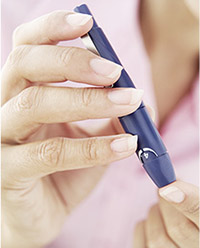Women need to be good detectives because symptoms of heart disease in women may be atypical. The result can be a missed or misdiagnosis, and a delay in testing and treatment. Heart disease is the leading cause of death among U.S. women, claiming about 420,000 lives annually, or nearly one death each minute. Cardiovascular disease (CVD) usually occurs about 10 years later in women than men, yet there is a disturbing new trend that growing numbers of women aged 35 to 54 are dying of heart disease, likely as a result of rising obesity rates.
Like any good detective, you need to dig deep to know your risk and pick up your body’s clues that something may be wrong. Most importantly, you need to be persistent and proactive to begin a plan for prevention and, if needed, treatment of heart disease. The recently published 2011 American Heart Association Guidelines for the Prevention of CVD in Women can help get you started.
Know your risks – Consult your healthcare provider to find out your risk level for heart disease. Find out if you are…
High Risk Women are considered “high risk” with one or more of the following:
• Coronary heart disease (blocked heart arteries)
• History of stroke or transient ischemic attacks (TIAs)
• Narrowing of leg arteries resulting in pain when walking
• Kidney disease
• Diabetes
At Risk Women are considered “at risk” with one or more of the following:
• Cigarette smoking
• High blood pressure
• Elevated cholesterol and triglycerides, obesity (especially if you have extra weight around the middle)
• Physical inactivity
• Family history of early heart disease
• Blocked heart arteries
Ideal cardiovascular health is the best category to strive for, and is achieved when all of the following conditions are present: normal cholesterol, blood pressure, fasting blood sugar levels and body mass. Exercise regularly and follow a healthy diet to stay within this ideal range.
Body clues – Pay attention to your body’s clues of a blocked heart artery or heart attack. The classic symptoms are crushing chest pain, indigestion, nausea or vomiting, sweating, anxiety, cough, fainting or dizziness. Women are more likely to complain of an intense, sharp, burning pain in the neck or throat. They may also note fatigue, shortness of breath and weakness. Seek medical assistance immediately if you have these symptoms for the appropriate treatment.
Be persistent and proactive – Once you have done your detective work and find yourself in the “high” or “at risk” group, your healthcare provider should map out a plan of action to reduce your risk of heart disease. This may include lifestyle changes and, if needed, medical or surgical treatment. You may be advised to stop smoking, lose weight, establish an exercise program, eat a diet low in saturated fats, sugar and salt, and limit your consumption of alcohol. Medications may be needed to lower blood pressure and cholesterol. Ask about the use of aspirin to help limit heart damage during a heart attack and prevent further heart problems. Other medical or surgical procedures may be required. If you are in the “ideal” category, keep up the good work!
You need to be persistent and proactive in your approach as taking these steps can make a difference in your heart health today and for the future.




 And Other Power Foods >
And Other Power Foods >